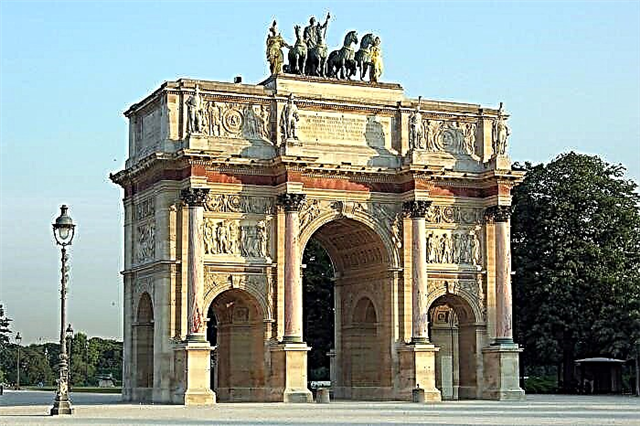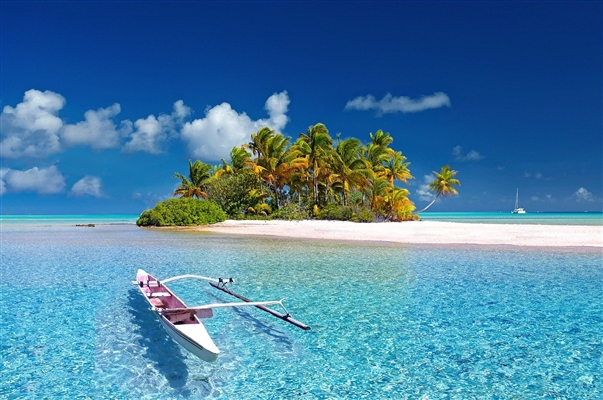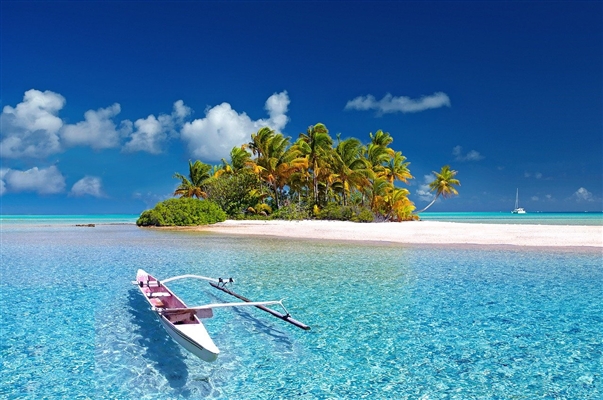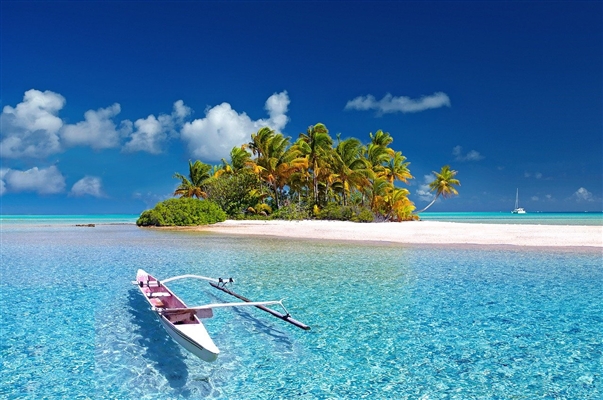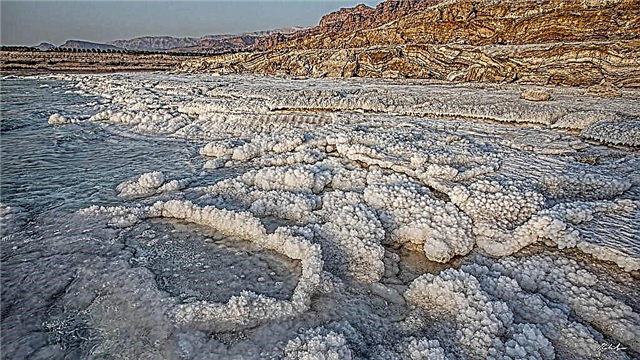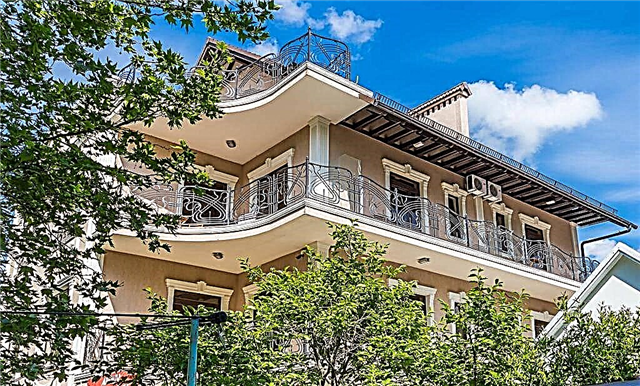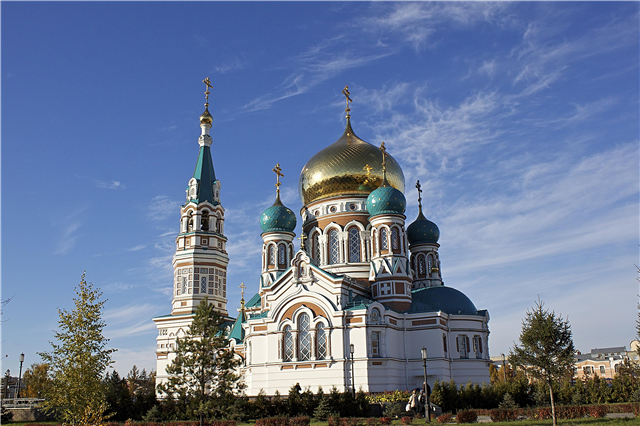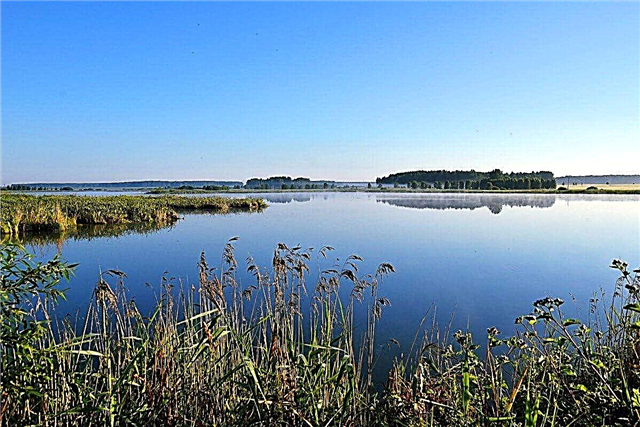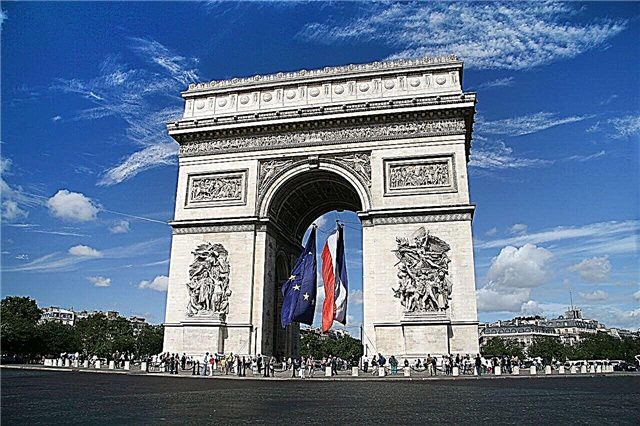Parisian monuments - historical map of the city. They retain triumphal arches for victories that they no longer pride themselves on, as well as dedications by personalities whose role was later redefined. In connection with rehabilitation, for example, he was awarded a monument to Michelle Ney. And Jacques Chirac decided to create a monument in honor of foreign Jews arrested at the beginning of the war on the orders of the Nazis.
The Eiffel Tower stands out on the list of attractions in Paris. The symbol of the city is adorned with postcards, and you can also admire it from different points of the capital. Another iconic place for the French is the Pere Lachaise cemetery. It is called the Museum of Tombstone Sculptures. A visit is an occasion to honor outstanding people and admire the sophistication of the tombstones.
Historical and modern monuments of Paris
List of the most popular monuments and sculptures in the city.
Eiffel Tower
The symbol of Paris, its main attraction. Named after the name of the designer Gustave Eiffel. The construction was completed in 1899. It was planned that the structure will be temporary: it served as an entrance arch during the World Exhibition in the city. Made of steel, its height is 324 meters. The tower is accessible for visits, it is illuminated in the evening, and is also used for light shows.
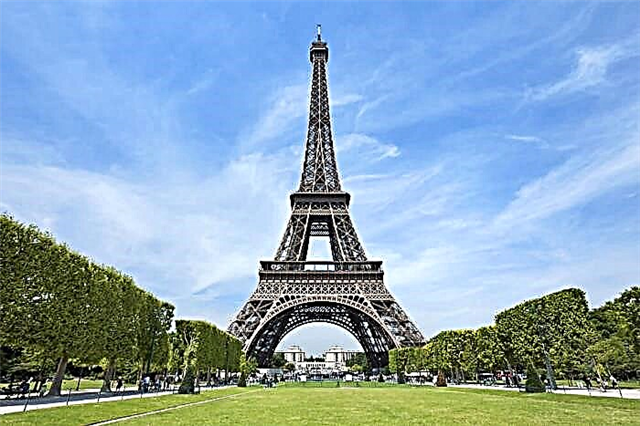
Triumphal Arch
Built in 1886. The square on which it is located is now named after Charles de Gaulle. Built by order of Napoleon, to pay tribute to the victories of the "Great Army". It has an impressive size and looks like a massive structure. The arch is about 50 meters high. The grave of the unknown soldier is located under the arches of the sights. The feat of the fallen during the First World War is marked with eternal fire.

Vendome column
It was built in the first years of the century before last. Height - 44 meters, diameter - about 3.5 meters. Cast from captured cannons and other weapons. The column is decorated with bas-reliefs created by Jean Baptiste Leper. At the top is a statue of Napoleon, dressed as an ancient Roman emperor. The installation of the monument caused public controversy, since many did not share the expansive moods of Bonaparte and his associates.

Statue of the Republic
This symbolic piece of monumental art was created by the Maurice brothers in 1880. It is located on the square of the same name and has a height of 10 meters. At the top is a female figure with a laurel wreath on her head - an identification with France itself. There are three more statues around - Liberty, Equality and Brotherhood. The place is significant, so there are large protests, rallies and strikes.

Luxor obelisk
The Egyptian ruler Mehmet Ali presented the obelisk to France in 1831. In the past, this historical monument, together with its exact copy, adorned the Amon-Ra temple located on the banks of the Nile. Now there are only ruins. In Paris, he was placed in the Place de la Concorde. The attraction replaced the guillotine to make it possible not to associate the area only with the terrible moments of history.

Monument to Alexander Dumas
The square on which the landmark is located is popularly called the "Square of the Three Dumas". On different sides of it there are monuments to three outstanding people with this surname. One of them is the writer Alexandre Dumas - the author of the world famous "Three Musketeers". This is the last creation of the monumentalist Gustave Dore. The writer sits on a chair on a high pedestal, and below are the admirers of his talent.

Monument to Jeanne D'Arc
Installed on the Pyramids Square after the defeat in the Franco-Prussian War in 1874. There was a patriotic upsurge in the country, and the appearance of the equestrian statue of the national heroine on the streets of Paris came at a time. Emmanuel Fremier did not take into account some of the peculiarities of examining the monument from the bottom up, so the figure of Jeanne D'Arc had to be enlarged to make it look proportional to the size of the horse.

The Statue of Liberty
A copy of the original gift sent to the USA. The American diaspora was engaged in manufacturing. They made deliberate inaccuracies, for example, they indicated the wrong dates on the book. In the first case, the year of the foundation of the United States, and in the second, the years of the revolution in France. The statue is almost 12 meters high. A hundred years after its creation, the landmark visited Japan, and then returned to its homeland.

Monument to the Soldiers of the Russian Expeditionary Force
Located in the historic center of the French capital. The monument was opened in 2011. It is dedicated to Russian soldiers who fought on the side of the allies at the beginning of the last century. The bronze sculptural composition was created by Vladimir and Danila Surovtsev. It represents the figures of an officer and his faithful horse. The monument was desecrated in 2013: this is how activists drew attention to the Pussy Riot case.

"Flame of Freedom"
The monument is a reciprocal gift from the United States: earlier they accepted the Statue of Liberty from the French as a symbol of friendship. The monument copies the flame from the torch of the original and draws even more parallels between the two countries. The author of the project was Auguste Bartholdi. After 1997, the area acquired additional importance for tourists and became a memorial: Princess Diana died in a tunnel nearby.

"The man walking through the wall"
There are many unusual monuments in Montmartre. And this one is one of them. On the Place de Marseille Aimé, a figure of a man partially protrudes from the wall. The attraction was created based on the work of the same name, which was written by Aimé. There the hero discovered in himself a magical talent - to go through obstacles. But the magic ended as quickly as it began, so he froze forever.

Monument to Charlemagne
Created by Charles and Louis Rocher to set an example for Parisians to follow. Charlemagne only visited the modern capital of France a couple of times. However, it was not for nothing that he received the nickname Great: the king united vast territories and even received the title of emperor from the Pope. After losing the Franco-Prussian War, it was necessary to remind the people of the greatness of the country, so the monument was erected on Notre Dame Square.

"Thumb"
Occupies a site in the La Défense business district, a suburb of Paris. A raised thumb is a symbol of approval and good luck. This was what Cesar Baldachini was guided by when promoting his project. The sculptor got carried away with the creation of enlarged thumbs back in 1965. His works were presented at international exhibitions and appeared on the streets of cities in different countries. In 1994, the turn came to the capital of France.

"Resurgent France"
The monument is a gift from Denmark to Paris. In 1958, he took his place on the Bir-Akeim bridge, decorating its observation deck. Initially, Holger Vederkinch created the statue of Jeanne D'Arc. She held a large sword in her hands and sat astride a horse racing forward. The French side refused the presentation, as they considered the image too belligerent. The project was changed and given a different name to avoid a scandal.

July Column
Located in the central part of the Place de la Bastille. The work of Jean-Antoine Alavuan is a dedication to three important days in French history that ended the absolute rule of Charles X. The column was installed in 1840 on the 10th anniversary of the revolution. On the day of the opening of the monument, the remains of more than 500 revolutionaries were buried at its foot, who died defending their ideals and a better future for the country.

Wall of love
One of the most unusual sights of Montmartre. It was created in 2000 by the joint efforts of the artist Claire Quito and the calligrapher Federic Baron. Wall covering area - 40 m². It is made up of tiles. On enameled lava, “I love you” is written 311 times in 250 languages. Red blotches are clearly visible on the surface.As conceived by the authors, these are parts of a broken heart.

"Six continents"
A sculptural group of six separate monuments is located near the Museum d'Orsay. The continents are represented as women. Their clothes have been added with elements typical of the local area. Ladies also hold symbolic items in their hands. Next to them are fruits, fish, papyri and figurines - everything that can indicate the place of residence. All sculptures were made in the same manner.

National memorial for the war in Algeria and the fighting in Morocco and Tunisia
In 2001, a competition was announced to create a composition in memory of the tragic events of the middle of the last century. The victory was won by the project of Gerard Colin-Tibere. The memorial consists of three white rectangular steles, almost 6 meters high. They are mounted screens with constantly alternating names of thousands of victims. Each of the screens is painted with one of the colors of the French flag. A commemorative inscription is engraved on the slabs in front of the steles.

King Henry IV statue
During his reign, the monarch put an end to the Huguenot wars, which erupted amid divisions between denominations. Henry IV's decree allowed Protestants to practice their religion freely. This made the king a favorite of a part of the people for decades. An equestrian statue in his honor appeared in 1818. The monument was erected on the island of Cite, the building of which was carried out by order of Henry IV.

Danton statue
Place Saint-Germain was chosen as the site for the installation of the monument at the end of the century before last. In the past, there was a house from which a reformer and a revolutionary was taken for execution. Auguste Paris portrayed Danton in a decisive pose. So he was during his lifetime: impetuous and unyielding. The composition includes two more figures - ordinary people, since the most famous phrase of Danton says: "After bread, the people need education."

Monument to Michel de Montaigne
Located in the Latin Quarter of Paris since 1933. Opposite is the Sorbonne University. Michel de Montaigne is a Renaissance philosopher. His bronze monument was created by the sculptor Paul Landowski. Students have a tradition of rubbing the shoe of a thinker sitting cross-legged before important exams. The search for luck led to the fact that this part of the sculpture was rubbed to a shine.

Monument to Etienne Marcel
The equestrian monument is known for the fact that several authors worked on it, but the final part of the project remained with Laurent Markest. Etienne Marcel served as a merchant provost during the reign of John II. The clothier became one of the reformists who wanted to limit the power of the monarch and create more freedoms for the population in the country. He also showed himself in the Hundred Years War, for which he was awarded a monument.

"Paris Defense"
The composition is set in the west of the capital, closer to the outskirts. This place used to be a sculpture of Napoleon. However, it was dismantled and drowned in the Seine. This was not done by vandals, but by residents who did not want to give the bronze to the enemy. "Paris Defense" is dedicated to those killed during the siege of the city during the Franco-Prussian War. The opening ceremony took place in 1883 and was attended by about 100 thousand people.

Monument to Charles de Gaulle
Jacques Cardot portrayed the first president of the Fifth Republic during the 1944 parade adoption. Charles de Gaulle confidently walks and looks into the distance. The sculpture is 6 meters high. The monument was erected in 2000 in connection with the 30th anniversary of the death of the politician and military leader. The territory where the monument is located is called "Three Walking Men", as there are monuments to Winston Churchill and Georges Clemenceau nearby.

Monument to the Victims of the Winter Velodrome
In 1942, the French police arrested thousands of foreign Jews on the orders of the Nazis. They were locked up for several days in an indoor velodrome, and then the survivors were sent to Auschwitz. It was only in 1995 that the incident was named by Jacques Chirac as an unforgivable sin for the state. The monument was created by Mario Azaguri and Walter Spitzer. The latter was at the velodrome when he was a child, and then managed to survive in the camp.

Human Rights Monument
It can be seen near the Champ de Mars. The reason for the installation in 1989 was the celebration of the 200th anniversary of the French Revolution. Despite the fact that the sculptor Ivan Teimer was inspired by Egyptian sights, his project has a number of references to the history of France. Numerous elements, including a sundial, several statues, and engraved text add significance to the monument.

Monument to St. Bernard the rescuer Barry
Roads laid along the Alps are dangerous: long distances, heights, unstable weather. In the monastery of Saint Bernard, a breed of dogs was bred, which were distinguished by their endurance and good scent. They looked for the frozen and helped them get to the people. Barry saved 40 people during his "career". A monument was erected in his honor in 1899. The monument depicts the dog himself and a child huddled against him.

"Fetter"
The sculptural composition was installed in 2009 on General Catroux Square and is dedicated to General Dumas. The monument is a five-meter long broken shackles of rusty iron. Their weight is about 5 tons. Thomas-Alexandre Dumas began his life as the son of a slave. He was sold, and then bought back by his father, a planter. He subsequently enlisted in the army and made an impressive career.

Belfort lion
It was created in the 70s of the last century. The stone statue is 11 meters high and 22 meters long. The lion is named after the city that withstood one of the longest sieges of the Franco-Prussian War. Made from red sandstone by Frederic Auguste Bartholdi. There was no official opening, as the master had disagreements with the city hall. Since 1930, the monument has a special conservation status.

Monument to Arthur Rimbaud
Contemporaries characterized the writer as "a traveler in shoes, knocked out by the wind." This is how the sculptor Jean-Robert Ipustegui tried to portray Rimbaud. The writer in his project is young and thoughtful. His body is connected to a scroll, and Arthur is leaning on his own legs. The grand opening of such an unusual monument took place in 1984 in front of the National Library. The composition is surrounded by a small square.

Monument to Michel Ney
The commander showed himself under Napoleon. Behind him several high-profile victories, but the defeat at Waterloo cost the military leader his life: immediately after the trial, an execution took place. A monument to Michel Ney appeared on the Avenue Del Observatoire after his rehabilitation. François Rud portrayed a full-length hero with a raised saber in his hands. The monument was cast in bronze and installed in 1853. Later it was moved during the construction of railway tracks.
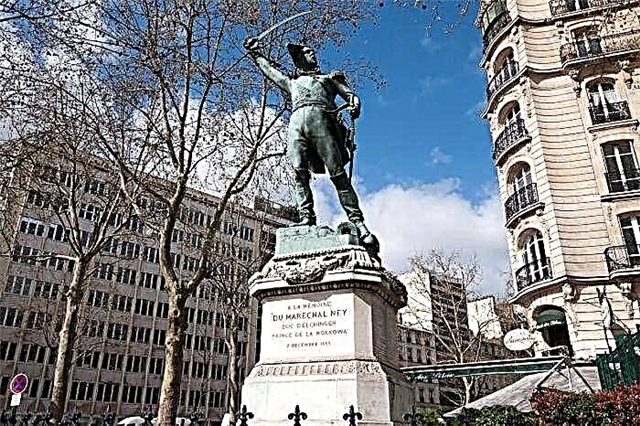
"Buried Bicycle"
Located in Parc de la Villette since 1990. The monumental sculpture consists of huge individual bicycle parts, partially buried in the ground. Swede Claes Oldenburg and Dutchman Kosier Van Brugen tried to convey the appearance of each element to the smallest detail. They should look real, albeit significantly enlarged. They even decided to decorate the steering wheel with a massive bell to add authenticity.

Gate of Saint-Denis
The arch was installed in the Tenth arrondissement on the way to the Louvre from the estate of the same name. The order for the construction was given by Louis XIV. François Blondel in 1672 created a dedication to the battle on the Rhine, as well as a replacement for a similar medieval arch. Height - about 25 meters, width - 24 meters. On both sides there are bas-reliefs that tell about the landmark military victories of the French army of that period.

Gate Saint-Martin
Built at the intersection of streets and boulevards with a similar name. Height - 18 meters, width - about 17 meters. Work on the construction of the gate was completed by 1674, and in the 80s of the last century they were restored. Bas-reliefs adorn the walls on either side of the main span. One of them depicts Louis XIV as the god of war Mars.The project became the basis for the creation of arches in France itself and in other countries.

Arch on Carrousel Square
Pierre Fontaine and Charles Persier drew inspiration from a similar building in Rome to create their masterpiece. The arch was erected by order of Napoleon, who wanted to perpetuate his military victories. It is dated 1808, at the same time the quadriga of St. Mark brought from Venice was hoisted to the top. After her return to her homeland, an allegorical composition appeared in this place.
